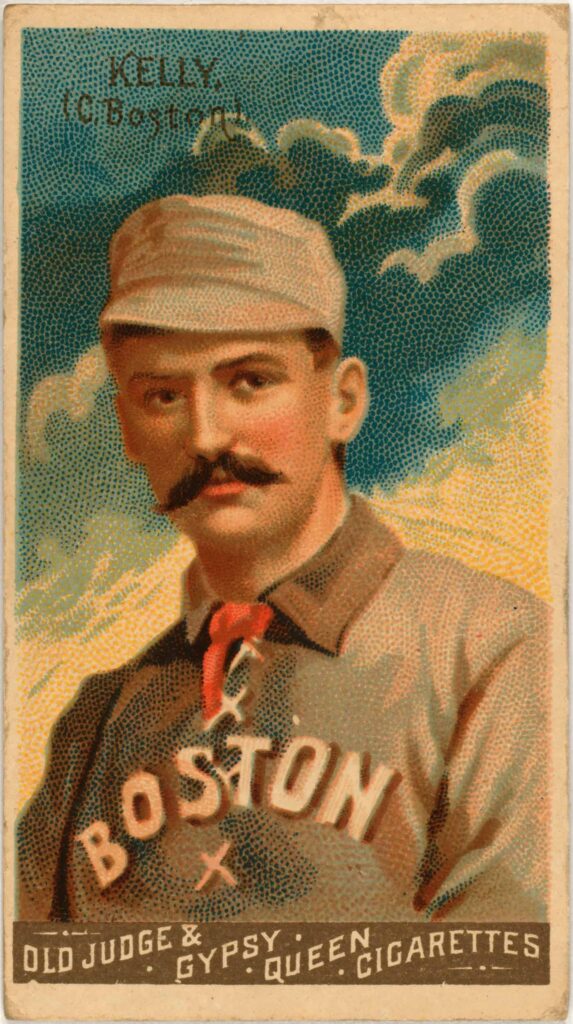
The History of Card Collecting: How Did Paper Cards Become a Hobby?
Card collecting is a global hobby today, captivating millions from sports fans to pop culture enthusiasts. But where did it all begin? How did these small pieces of paper turn into treasured keepsakes, and what sparked the creation of the first collectible cards? Let’s travel back in time to explore the roots of card collecting, the pioneering manufacturers, the origins of the idea, and how these cards were originally used.
The Beginnings: Trade Cards in the 19th Century
The story of card collecting dates back to the mid-19th century, when advancements in printing technology made colorful, mass-produced images possible. The earliest collectible cards weren’t created for a hobby—they emerged as part of commercial products. In the 1860s, tobacco companies in the United States and Great Britain began including “trade cards” with their goods. Initially designed to stiffen cigarette packs, these small, illustrated cards soon doubled as advertisements. Featuring vibrant images of celebrities, animals, historical events, or exotic locations, they grabbed buyers’ attention and piqued their curiosity.
The concept was simple yet brilliant: the cards encouraged collecting, prompting customers to buy more products to complete their sets. Among the first known manufacturers was the American firm Allen & Ginter, which started adding cards to its tobacco products in 1875. They pioneered thematic series—depicting athletes, actors, or Native American chiefs—laying the groundwork for the collecting culture we know today.

The First Manufacturer: Allen & Ginter and the Birth of Sports Cards
Allen & Ginter is credited with truly launching card collecting as a hobby. In 1886, they introduced baseball cards, tucked into cigarette packs, featuring stars of the era like King Kelly and Cap Anson. These quickly became a hit with fans, likely inspired by the growing popularity of baseball in the U.S. and the realization that images of famous players could forge an emotional connection with buyers. The cards didn’t just promote the brand—they gave sports fans a new way to engage with their idols.
Following Allen & Ginter’s success, other tobacco companies jumped on board. Goodwin & Co., behind the Old Judge brand, launched a massive series in 1887, featuring over 2,000 baseball players on photo-based cards—the first large-scale sports card collection. What started as promotional tools soon gained independent value, as people began trading, collecting, and even framing them for display in their homes.
Where Did the Idea Come From?
The concept of trade cards wasn’t entirely new. In Europe, printed cards had existed since the 17th and 18th centuries, often for educational purposes like teaching history or geography. However, modern collectible cards were a product of the Industrial Revolution, particularly the rise of lithography. This technology allowed for cheap, large-scale production of detailed, colorful images accessible to the masses. In the U.S., the tobacco industry was the first to seize this opportunity for commerce, though candy and food companies soon followed suit.
The inspiration may also stem from the Victorian era’s collecting craze. During this time, people loved amassing postcards, stamps, and other small mementos, making cards a natural fit for the cultural trend. Manufacturers saw that by creating themed series, they could motivate people to collect the full set—planting the seeds for the “completist” mindset that persists today.
What Were the Cards Used For?
Initially, cards were all about boosting product sales. Tobacco and candy makers used them to lure customers back while promoting their brands. The variety of images—athletes, actresses, animals, historical scenes—ensured broad appeal, with something for everyone. Allen & Ginter, for instance, produced sets like “World’s Champions,” showcasing stars from various sports, or “Pirates of the Spanish Main,” tapping into adventure themes to entice buyers.
Over time, though, the cards outgrew their original purpose. People started collecting, trading, and organizing them into albums, turning a practical stiffener and ad into a full-fledged hobby. Kids played a big role in this shift: by the early 1900s, candy companies like the Goudey Gum Company targeted them with cards, such as the 1933 baseball series bundled with gum. These became status symbols among friends—owning a rare card was something to brag about.

The Evolution of Card Collecting
The 20th century saw card collecting evolve further. The tobacco card era faded by the 1940s, due in part to the Great Depression and wartime paper shortages, but sports cards endured. In the 1950s, Topps took the lead, elevating the hobby with iconic releases like the 1952 baseball set. Cards were no longer just promotional extras—they became standalone products crafted for collectors and fans.
Today, card collecting is a diverse world, spanning sports cards, trading card games (e.g., Pokémon, Magic: The Gathering), movie relics, and pop culture sets. Yet the core idea—a simple paper card holding value and excitement—remains unchanged. The tradition started by Allen & Ginter and other pioneers lives on every time we open a pack, feeling the same anticipation as collectors did over a century ago.
Conclusion
Card collecting grew from a chance idea—stiffening tobacco packs—into a worldwide passion. Allen & Ginter, as the first major manufacturer, recognized the power of images and series to captivate buyers, setting the stage for modern collecting. What began as advertising has become an obsession—a realm where paper tells stories, preserves memories, and sometimes holds a small fortune.
